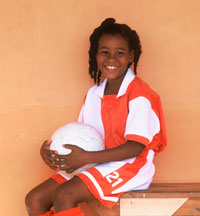By AOSSM

There is nothing more discouraging to a young athlete than an injury. Keeping young athletes safe is critical to fostering enjoyment from sports and developing a lifelong active lifestyle.
Many children and youths participate in organized athletics, either through school or community leagues. These athletes can be challenged both physically and mentally from this activity and may formulate lifelong relationships with organized sports. Unfortunately, injuries do occur. Among the roughly 7 million high school scholastic athletes, approximately 2 million injuries occur annually. Sports like soccer, basketball, and football are commonly participated in and injury research has led to some preventive measures to help make these sports safer for kids. Preventive measures may take the simple form of equipment or rule changes. But how do we get the word out about just the simple activity of safely participating in athletics and marketing to those groups who need the information the most? (parents, coaches and athletes themselves.)
The American Orthopaedic Society for Sports Medicine and its partners, including the National Athletic Trainers’ Association, American Academy of Pediatrics, American Academy of Orthopaedic Surgeons, National Strength and Conditioning Association, SAFE Kids USA, Sports Physical Therapy Section and the American Medical Society for Sports Medicine along with many individual hospitals, sports medicine practices and sports leagues are stirring up a grass roots movement to teach and market safe sports participation. The initiative called STOP Sports Injuries, is engaging community leaders by asking them to send out press releases to local media, giving talks on safety issues to parents and coaches, placing specialized logos of participation on websites, releasing public service announcements and have local individuals follow up with radio and TV stations and interacting on social media sites such as Facebook and Twitter. Slowly but surely the word is getting out and the campaign is really starting to create a buzz in the sports medicine community. This type of marketing and education effort takes a lot of time and persistence but our hope is to make an impact and keep kids active and participating in sports so they can enjoy the benefits of exercise for a lifetime.
For more information or to get involved, visit our STOP Sports Injuries Web site and help share our commitment to keeping kids in the game for life. We would love to hear your suggestions for additional outreach or ways to enhance our educational efforts.
How can your organizations get involved and help market injury prevention to multiple audiences (coaches, parents, athletes and healthcare providers?